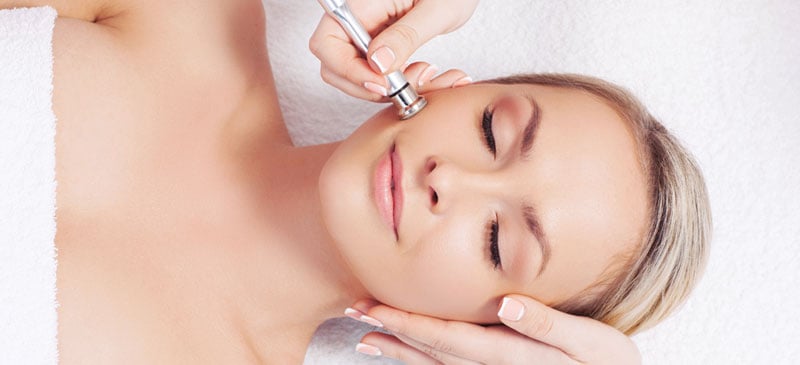This Dr. Axe content is medically reviewed or fact checked to ensure factually accurate information.
With strict editorial sourcing guidelines, we only link to academic research institutions, reputable media sites and, when research is available, medically peer-reviewed studies. Note that the numbers in parentheses (1, 2, etc.) are clickable links to these studies.
The information in our articles is NOT intended to replace a one-on-one relationship with a qualified health care professional and is not intended as medical advice.
This article is based on scientific evidence, written by experts and fact checked by our trained editorial staff. Note that the numbers in parentheses (1, 2, etc.) are clickable links to medically peer-reviewed studies.
Our team includes licensed nutritionists and dietitians, certified health education specialists, as well as certified strength and conditioning specialists, personal trainers and corrective exercise specialists. Our team aims to be not only thorough with its research, but also objective and unbiased.
The information in our articles is NOT intended to replace a one-on-one relationship with a qualified health care professional and is not intended as medical advice.
What Is Microdermabrasion? Benefits & Risks of This Skin Procedure
October 8, 2019

Microdermabrasion is one of the most common nonsurgical cosmetic procedures that’s performed in the United States.
It’s done to improve skin health by exfoliating dead skin cells and promoting the production of healthier and thicker cells within the first layer of skin.
With a reasonable price tag and little down time afterward, it’s no wonder why microdermabrasion is such a popular way to promote a more youth appearance, improve skin impurities and support healthier skin.
What Is Microdermabrasion?
Microdermabrasion is a non-surgical exfoliating treatment. A handheld device is used to “sand away” dead skin cells in order to make way for healthier cells.
This noninvasive procedure has been shown to promote skin rejuvenation, increase cell thickness and boost collagen synthesis.
The cost of a microdermabrasion procedure varies depending on your provider and geographic location, but it will likely be in the $100–$150 range. Because it’s considered a cosmetic procedure, it will not be covered by insurance in most cases.
Related: Is Dermaplaning Safe? Potential Benefits, Risks, Side Effects & More
Uses and Benefits
Microdermabrasion has been shown to benefit the skin in the following ways:
- Improves skin softness, texture and “glow”
- Improves acne, acne scars and age spots
- Improves fine lines and wrinkles
- Minimize pores and blackheads
- Promote even skin tone
- Reduce sun damage
- Decreases visibility of pores
- Decreases sebum (oil) levels
- Decreases skin stiffness
- Increases skin thickness and compliance
- Improves collagen fiber density
- Improves scarring and photoaging
- Reduces sun damage and melasma (gray-brown patches)
The procedure sheds dead skin cells and allows for the production of new cells, which are larger and healthier.
During cell reproduction, the fibroblasts increase the production of collagen and elastin fibers, giving your skin a more youthful appearance.
Research shows that this procedure improves skin contour irregularities and transdermal delivery of certain medications and proteins.
How Does It Work?
During a microdermabrasion procedure, a vacuum system is used to propel an abrasive agent against the skin. The procedure works to exfoliate the skin and ultimately remove the outermost layer of the epidermis, called the stratum corneum.
The skin then goes through a wound-healing process in which a new, enhanced and restored layer of skin forms.
There are a few types of microdermabrasion that differ because of the specific devices that are used. You’ll see these microdermabrasion options:
- Crystal microdermabrasion: Fine crystals are emitted by a vacuum device and work to rub away the outer layer of skin. The device also suctions away dead skin cells right away. The crystals used during this type of procedure are typically made up of aluminum oxide and sodium bicarbonate.
- Diamond microdermabrasion: A diamond-tipped wand is used to gently exfoliate the skin, removing the outer layer and suctioning the dead skin cells simultaneously. The diamond wands are made of laser cut diamond chips that come in various sizes and coarseness. The diamond abrasion is known to be more accurate, since the exfoliating is not being done by crystals that can stray during the treatment.
- Hydradermabrasion: This known as a gentler exfoliating treatment that uses a jet peel machine that distributes air and water to the face at a high speed. This may be a better approach for people with sensitive or dry skin.
For the procedure, you’ll be in a reclining chair as your skin care specialist uses a handheld vacuum device to “sand away” the top layer of your skin.
The entire procedure typically takes 30–60 minutes. It isn’t painful, and there’s no need for a numbing agent.
Afterward, the specialist will apply a moisturizer.
Related: What Is an Esthetician? Training, Benefits, Treatments & More
How to Prepare for It
Microdermabrasion is considered a minimally invasive procedure. You don’t have to prepare your skin for the treatment, but it’s a good idea to speak your skin care professional about potential risks, allergies and adverse effects.
Before the procedure begins, the skin care specialist will thoroughly clean your face and remove any makeup or lotions.
After the procedure, it’s recommended to avoid sun exposure and any skin regime that may be harsh on your healing skin, like waxing or exfoliating.
Risks and Side Effects
Microdermabrasion is considered safe and most patients don’t experience any side effects. The most commonly reported complications include:
- Redness
- Swelling
- Tenderness
- Bruising
- Petechiae (red, brown or purple spots)
It’s important that the procedure is done by a trained professional, and proper safety techniques should be practiced to avoid adverse effects.
The equipment used in the procedure must also be sterilized properly in order to reduce the risk of infectious disease transmission from one patient to another.
Recovery
Patients report achieving the desired results four to six weeks after a microdermabrasion treatment.
Generally, it is advised that it’ll take at least two weeks before skin redness and spotting will subside. You may also experience some skin peeling in the days or weeks following the treatment.
It is important to avoid sun exposure for a few days after treatment because the skin is more sensitive to photodamage. All patients are advised to wear sunscreen or avoid the sun completely for at least one week after the procedure.
You may not notice the desired results after just one treatment. A series of microdermabrasion services, consisting of three or more, is said to give you the best results.
Final Thoughts
- Microdermabrasion is a non-chemical, non-surgical and minimally invasive cosmetic procedure.
- It works to gently exfoliate the skin, ridding the outer layer of dead skin cells and making room for healthier, thicker cells instead.
- It’s commonly used to reduce fine lines and wrinkles, improve acne, even skin tone, and promote a youth texture and appearance.
- The procedure takes anywhere from 30–60 minutes and will run you about $150, depending on your specialist and location.
- Microdermabrasion is considered safe but may leave you with some redness and peeling for a few weeks. Be sure to wear sunscreen following the treatment and avoid any harsh regimes, like waxing.













